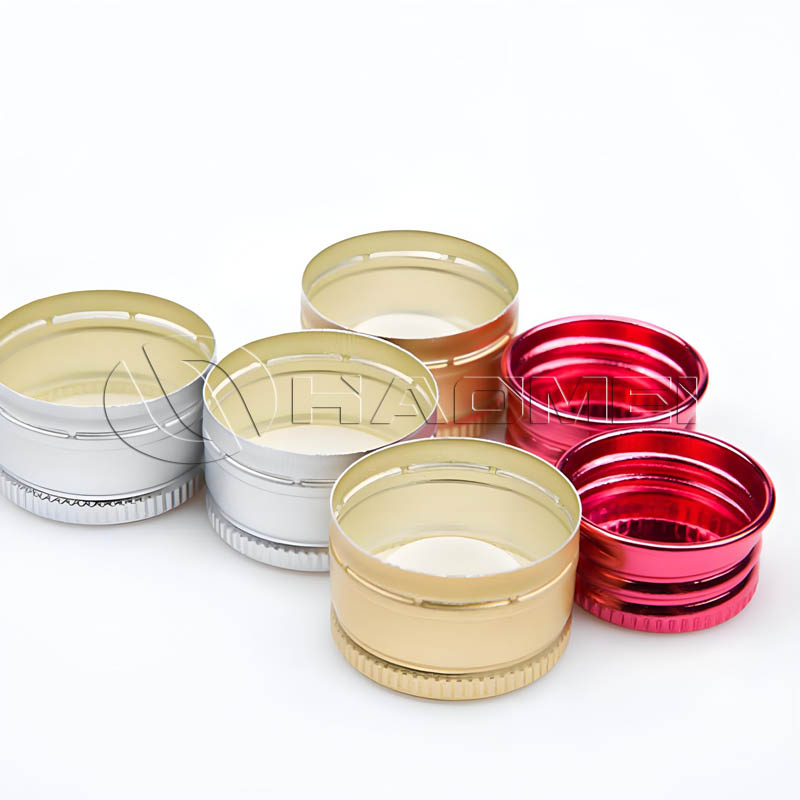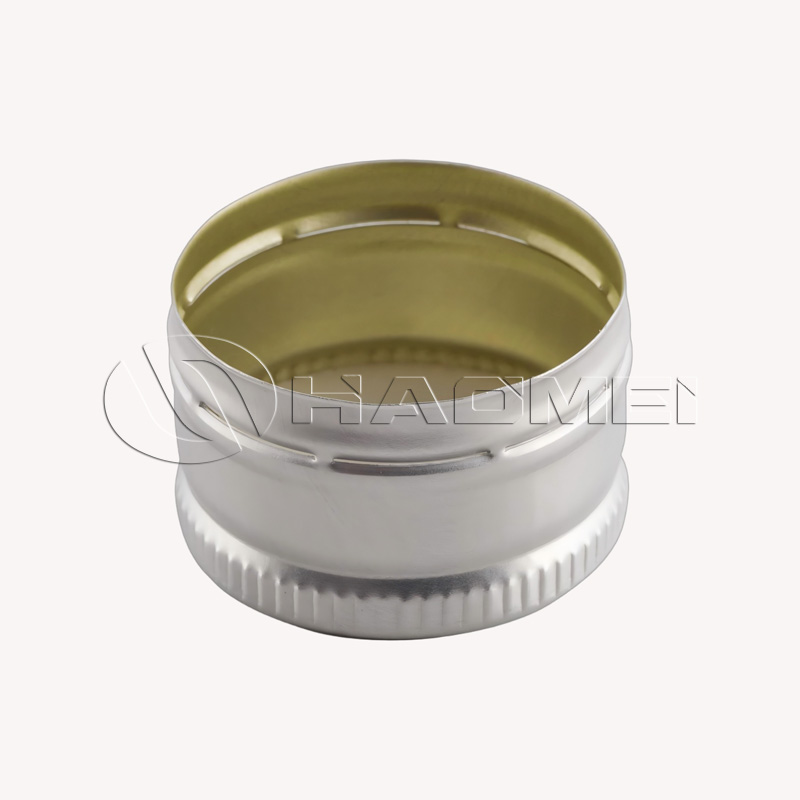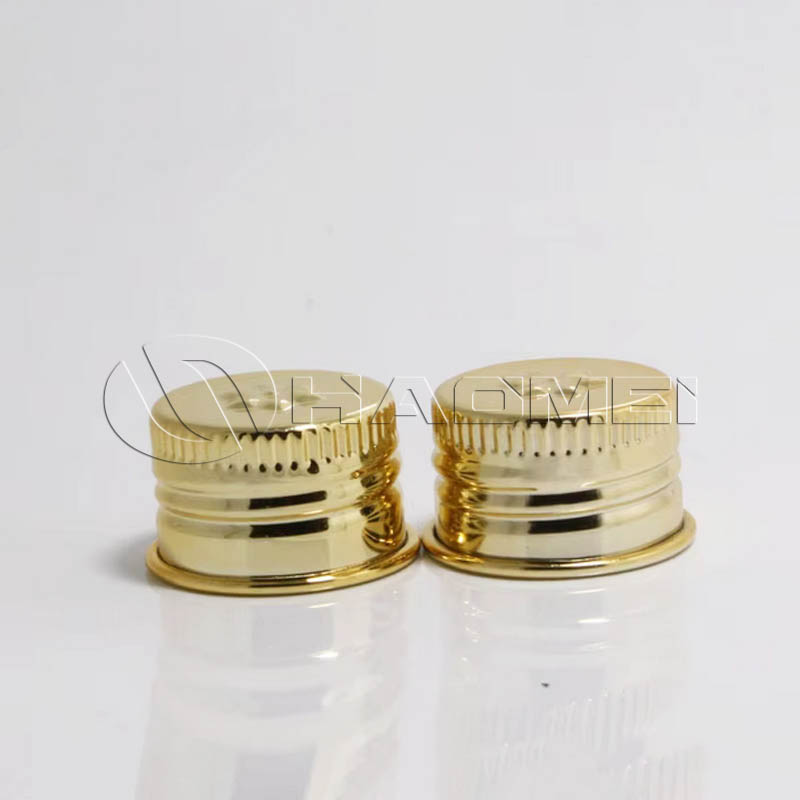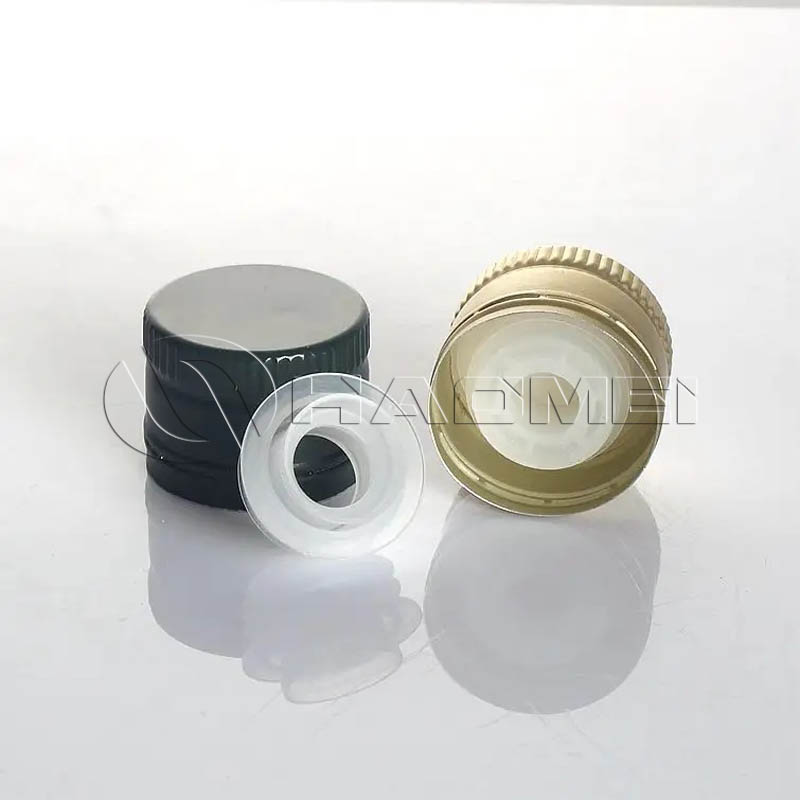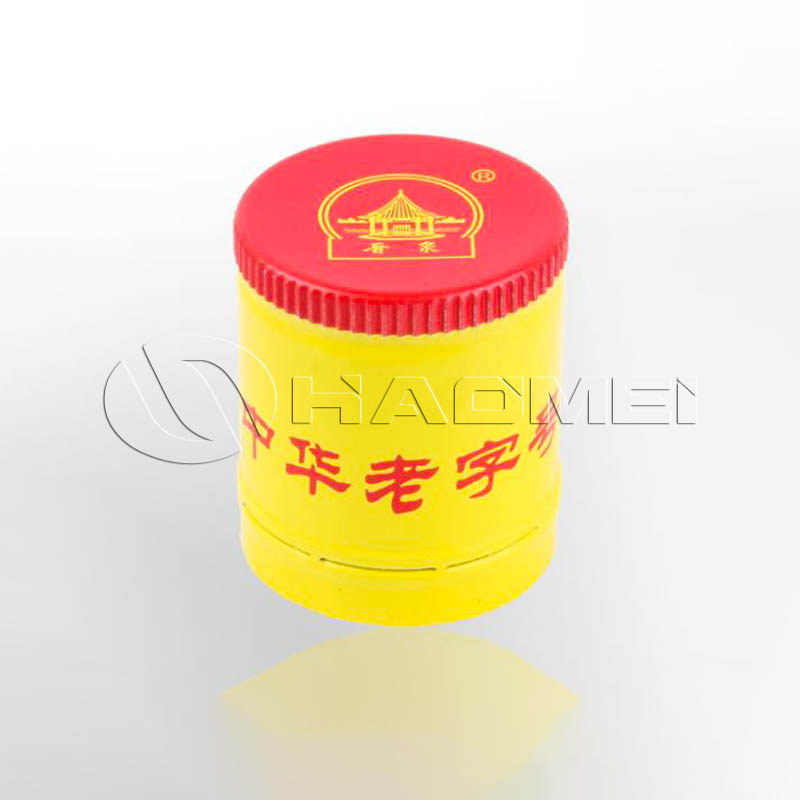In beverage, alcohol, food, and pharmaceutical packaging, bottle caps act as the “guardians of sealing.” They not only ensure the safety and quality of the contents but also impact brand image and consumer experience. The most common bottle cap materials are aluminum and tinplate, each with distinct characteristics and applications.
Aluminum Bottle Caps
HAOMEI Aluminum produces aluminum bottle caps using food-grade aluminum alloys such as 3105, 8011, and 1060, rolled and refined through stretching, stamping, printing, hot stamping, or lamination. Aluminum is lightweight, highly ductile, suitable for high-speed mass production, and allows precise threads, tamper-evident rings, and decorative designs.
HAOMEI offers various types of aluminum caps, including ROPP caps, tamper-proof aluminum caps, twist-off caps, crown caps, aluminum-plastic caps, and hot-stamped caps. They are widely used to seal glass bottles containing mineral water, natural water, alcoholic and non-alcoholic beverages, pharmaceuticals, and juices.
Main standard sizes: 28x18mm, 30x60mm, 28x15mm, 31.5x24mm, 30x44mm, with custom sizes available. Surface printing services include screen printing, side printing, hot stamping in gold/silver (top, side, or positional), embossing, and more, meeting diverse branding and promotional needs.
Why Aluminum Caps Are Popular
Lightweight & Portable: Much lighter than tinplate caps, reducing transportation and logistics costs.
Excellent Corrosion Resistance: Aluminum forms a natural oxide layer in air, offering strong resistance to oxidation and moisture, ideal for long-term storage of beverages, alcohol, and pharmaceuticals.
Superior Sealing: When combined with EPE, Saranex, or composite liners, aluminum caps achieve excellent airtightness and barrier properties, keeping products fresh.
Decorative & Brand-Enhancing: Aluminum caps can be printed in vibrant colors, hot-stamped, or embossed, giving a premium feel suitable for wine, spirits, olive oil, and cosmetics.
Environmentally Friendly & Recyclable: Alumi
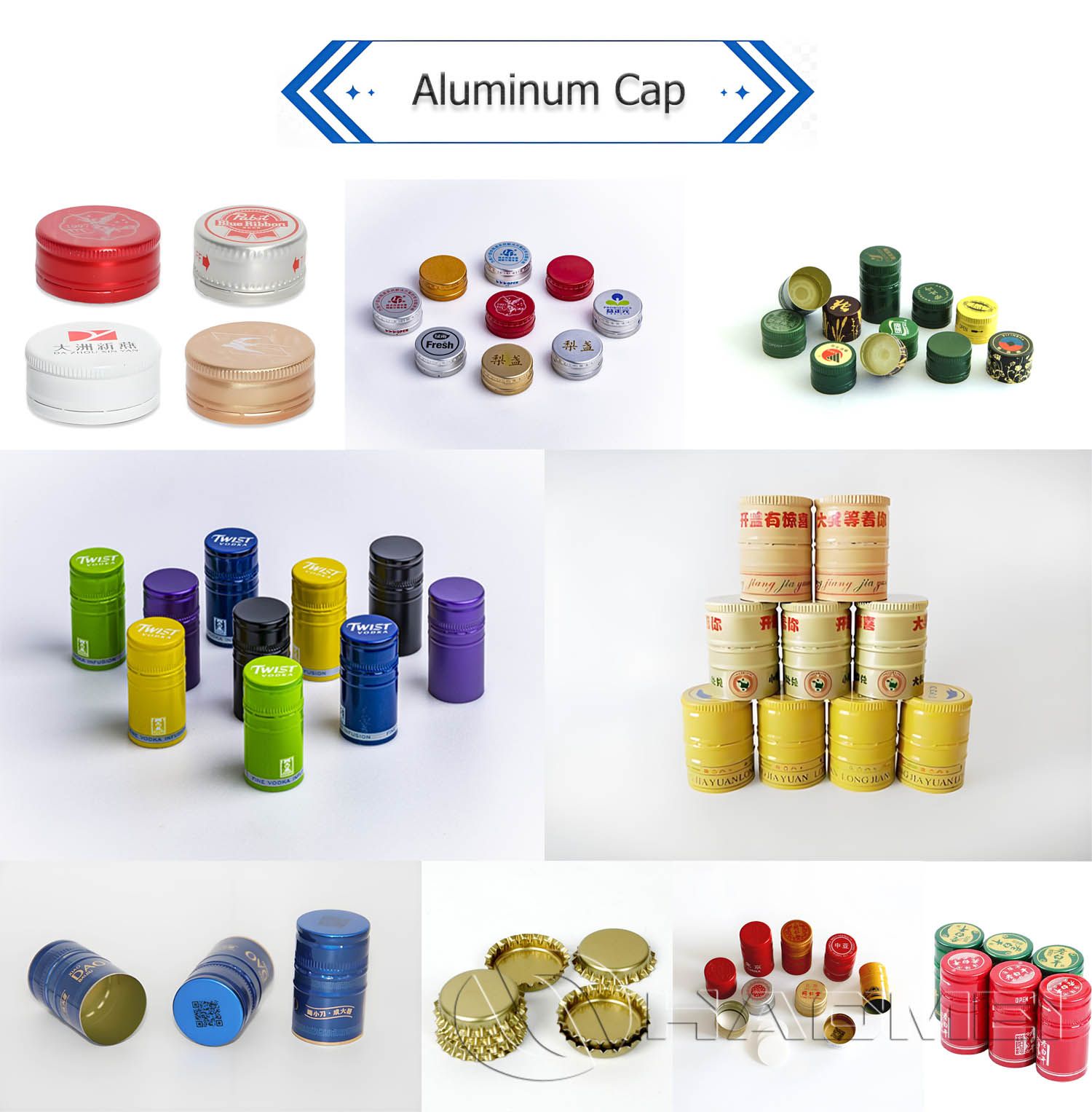 num has high recycling value and can be reused indefinitely, aligning with sustainable development goals.
num has high recycling value and can be reused indefinitely, aligning with sustainable development goals.
Tinplate Caps
Tinplate caps are made from tin-coated steel, offering high strength and resistance to deformation. They are commonly used for beer crown caps, canned food lids, and other packaging. Their main advantages are high hardness and pressure resistance, but they are heavier, prone to rust if coating is damaged, and require careful handling and storage.
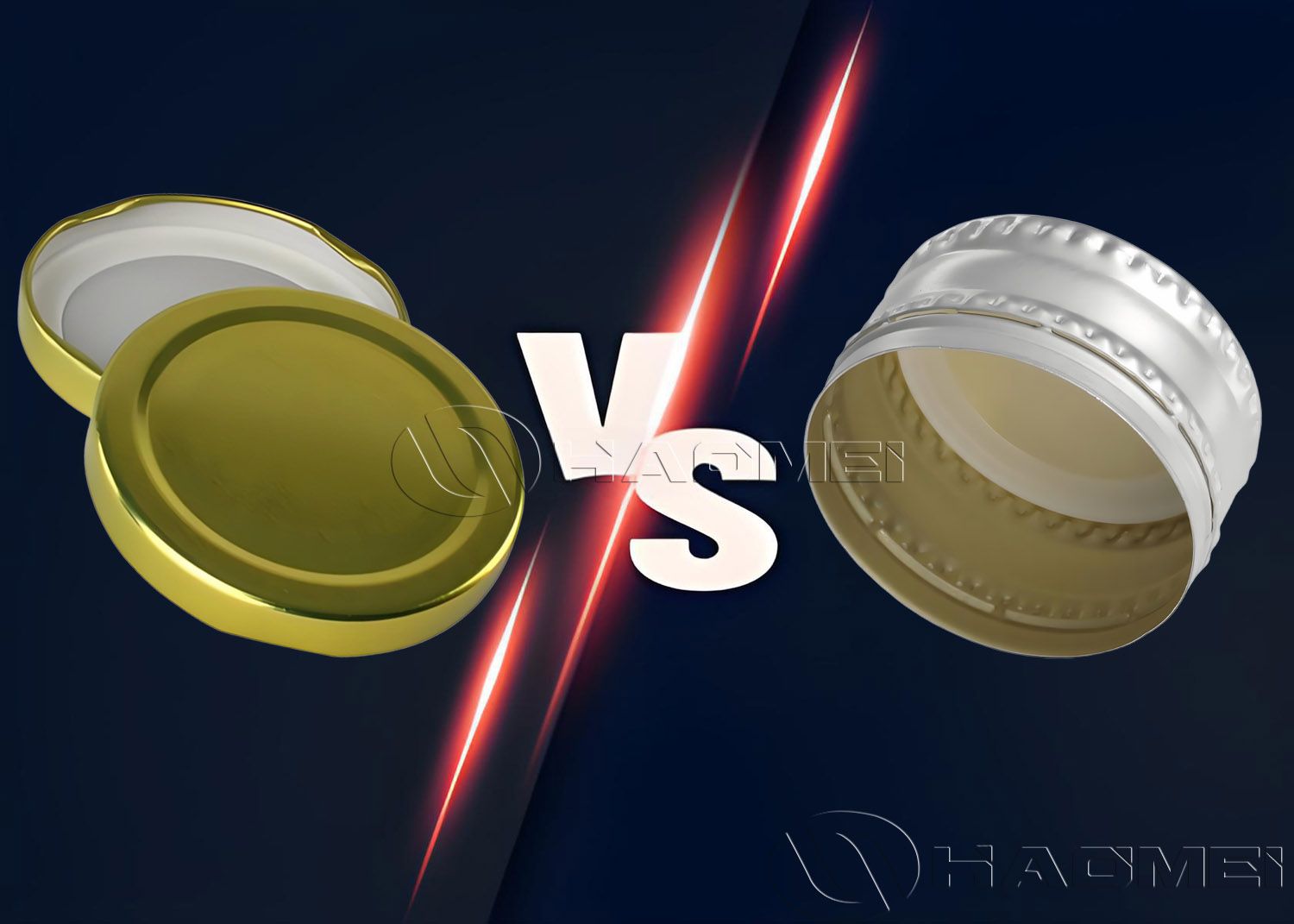
Aluminum Cap VS Tinplate Cap
| Feature | Aluminum Cap | Tinplate Cap |
| Weight | Lightweight, reduces transport and logistics costs | Heavy, increases transport costs |
| Corrosion Resistance | Naturally rust-resistant, suitable for acidic beverages | Relies on tin coating; prone to rust if damaged |
| Formability | Excellent, easy for deep drawing and curling, high production efficiency | Good, but harder to form; higher energy consumption |
| Recycling Value | High, recyclable indefinitely, environmentally friendly | Lower, recycling process more complex |
| Sealing Performance | Superior, can achieve high airtightness with liners | Good, typically used for products with lower airtightness requirements |
Why Choose Aluminum Bottle Caps?
With rising consumer expectations and sustainability trends, aluminum bottle caps are gradually replacing tinplate caps, becoming the first choice for premium beverages and health products. They provide outstanding sealing, excellent corrosion resistance, and premium decorative options to enhance brand image. For alcohol, edible oils, and pharmaceutical products, aluminum caps offer a safer, more eco-friendly, and efficient solution.

